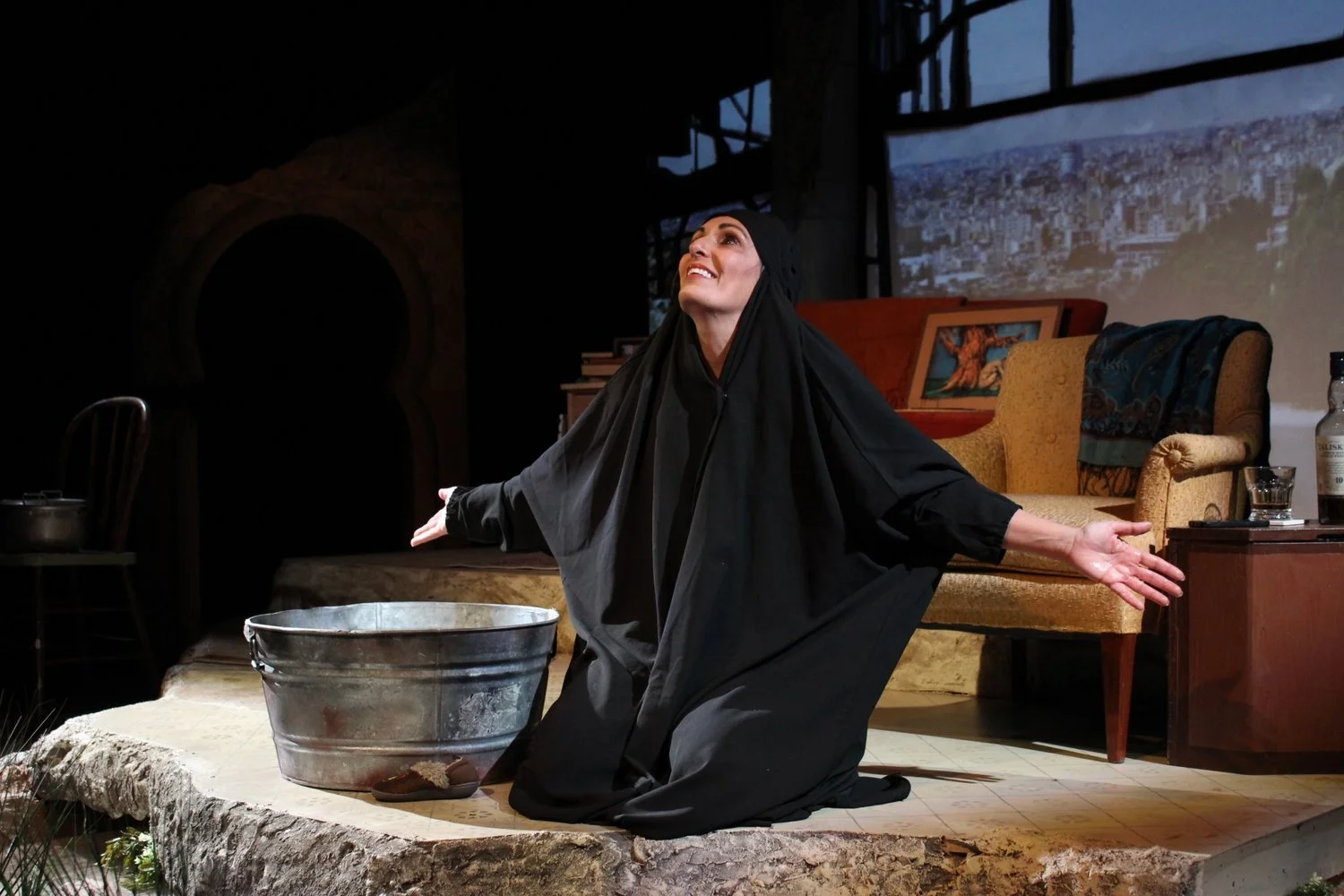Review: "9 Parts of Desire" at Williamston Theatre
What do you think of when you think of Iraq? Wars? Politics? Endless arguments?
How about the people? More specifically, do you ever think of the women of Iraq?
If you don’t, you may find it hard not to in the future after seeing “9 Parts of Desire” at Williamston Theatre in Michigan.
The play, originally produced in the early 2000s was rewritten during the pandemic to include the playwright’s experience with her father’s death and the plot against the Michigan’s Gov. Gretchen Whitmer. Moving between Iraq, Londong and Michigan, the play covers periods from both Iraqi Wars to the present. The playwright, Heather Raffo, is originally from Michigan, specifically Okemos, a town not far from Williamston Theatre.
This one-woman show is being performed by Sarab Kamoo, a friend of the playwright. Kamoo is perfectly cast for this role and co-directs it with Ed Nahat, the founder of Royal Oak Shakespeare.
Her 90-minute performance is breathtaking. She creates nine distinct characters who exist at various points on an emotional spectrum and who live at different points in her incredible vocal range. She plays a variety of ages, intentions and personalities. The language travels from poetic to raw to fearful to resigned. The accents vary with each character.
Most importantly, there is an intense authenticity in Kamoo’s performance, a commitment to each character and the story that she tells. Each narrative is completely Iraqi while being very different—because, of course, as the play insists on ensuring that the audience know, the Iraqi experience is not a singular one. The way each woman intersects with her culture is unique as are her dreams, hopes and heartbreaks.
Some of the nine characters make repeated appearances, such as Layal, a painter who won the favor of the Hussein regime even as her paintings subtly condemned it. Based on a real person, though the story diverges from the actual artist, she is the one who first inspired Raffo to write the play. The character starts out joyful and journeys through sometimes harrowing changes.
Other characters show up only once, such as the young girl whose father was arrested because of careless words she said at school, or the doctor who is in despair over her patients and their deformities.
Nahhat and Kamoo do an amazing job of providing transitions between these characters, changes made with stage locations, props and furnishings, costumes and, of course, Kamoo’s incredible acting work.
Nahhat leads a technical team that has the same commitment to excellence that the artistic team shows.
The stage must provide the backdrop for stories that take place in nine different locales and in some case, locales that must move with the story. Set designer Jennifer Maiseloff surrounds the stage with a stream of running water, water that frequently becomes a part of the story. She creates a staggered framework at the back of the stage upon which Quinn Legge casts a series of perfectly created projections. They create scenes of Iraq, a bomb shelter and support the mood with thoughtful intensities of light.
Michelle Raymond gives each of the women a collection of props that lets them tell their stories, whether an assortment of shoes and sandals, household goods sold at the side of the road, or a teenager’s magazine. Each is meticulous in its accuracy and designed to further the story. In this show, Raymond not only designs the props, but she dresses the entire set as well, creating a narrative of color through which Kamoo moves.
Becca Bedell’s lighting helps create transitions between characters as well as underlining the mood that is dominant in each scene. John Lepard provides a sound design that is sometimes haunting, sometimes startling and sometimes joyful.
Costumer Karen Kangas-Preston’s work seems simple, but it is essential to keeping the changes between characters flowing naturally and quickly. She makes sure that her work doesn’t just look good, but makes it possible for the story to be told.
Williamston Theatre offers an intense night at the theater with “9 Parts of Desire.” It’s the kind of work that is meaningful, one that fosters empathy and reminds those who have been gone from the theater for too long why we need it, why we need to be in the same room participating in a story that is a communal work of art.
